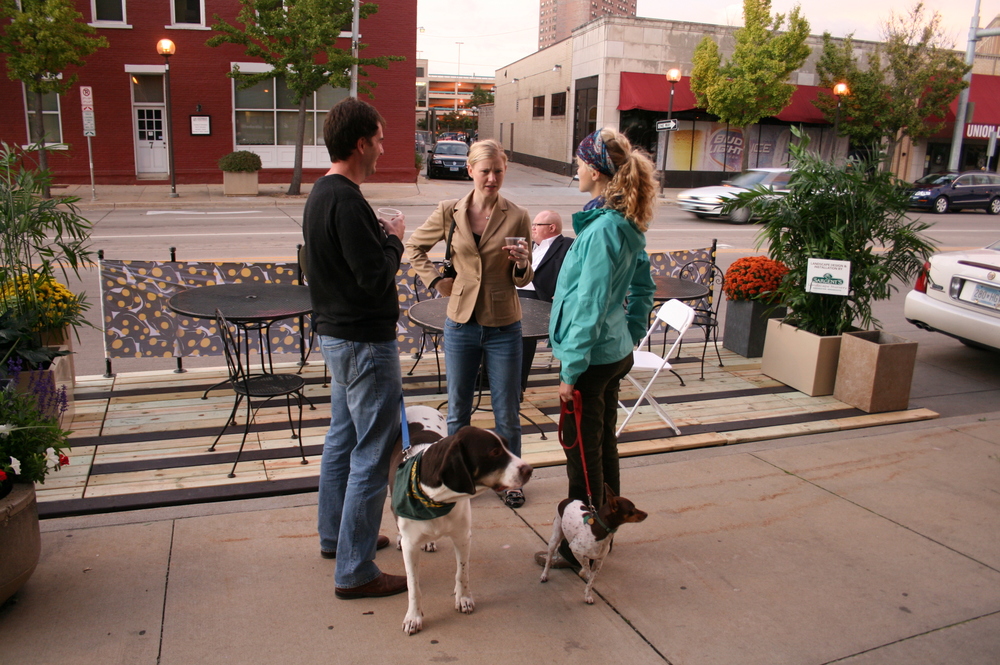If you have never heard of a parklet before, I will attempt to explain. If it sounds familiar, you may have heard about it under a different name or heard of PARK(ing) Day which strives to envision what a parking stall can be if not simply devoted to the storage of vehicles.

In the fundamental sense, a parklet is an alternative use for a parking spot. It can occur in a parallel or angled parking stall and can be as permanent or temporary as you like. Often they are designed to be more permanent as store owners, businesses and/or cities see their implementation as a better land use than parking. The movement has spread through the larger urban cities in the U.S. including New York City, Philadelphia, and San Francisco. In San Francisco they have even been added to Google Maps if you are interested in frequenting one while on vacation.
One of the best explanations of the principles behind the parklet movement is this one from the Pavement to Parks program also located in San Francisco:
public rights-of-way make up fully 25% of the city’s land area, more space even than is found in all of the city’s parks. Many of our streets are excessively wide and contain large zones of wasted space, especially at intersections. San Francisco’s new “Pavement to Parks” projects seek to temporarily reclaim these unused swathes and quickly and inexpensively turn them into new public plazas and parks. During the temporary closure, the success of these plazas will be evaluated to understand what adjustments need to be made in the short term, and ultimately, whether the temporary closure should be a long term community investment.
This simple concept--designing an alternative use for a roughly 8' x 22' parking stall--has tremendous potential and limitless ways of executing. Below are some amazing examples of what a little more design time can produce (Top: Walter J. Hood, Bottom: Rebar)


We instantly new that this concept could be tested In concert with the Rochester Symphony Orchestra & Chorale Coda event that takes place at the Riverside Building. While it didn't make it in time for the last outdoor Coda event at the beginning of September, we strived to get it completed for the ARTWALK held September 29th.
If you couldn't make it out for the ARTWALK in downtown Rochester recently, you missed out on the reality of Rochester's first ever parklet installation. It was constructed and installed at the Riverside Building on 4th Street SE by members of the Design Rochester. Below is a sequence of photos depicting it's installation which only took 25 minutes.

Despite the incredibly windy conditions that evening, the parklet displayed potential. The Riverside Building doesn't have the need to expand cafe seating, but it is easy to imagine other businesses downtown desiring to increase their boulevard space in the warmer months to increase space, and add to their appeal. We are optimistic that further partnerships can be formed to leverage this first proof of concept into larger scale and more frequent installations throughout downtown.




